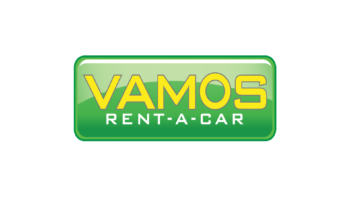Costa Rica Surfing
Movies like Endless Summer II in 1994 helped to fuel the surfing in the warm waters of Costa Rica – a dual-coast country with lots to offer! Hang ten with me and I’ll show you where to go, what to bring and most of all, what to avoid during your surfing adventure. So let’s strap our waxed boards to the roof rack, run across the clean beaches and hit waves in search of your perfect ride! So what are you waiting for?
Costa Rica is a recent surfing Mecca. The dual coastlines offer a wide variety of beaches, bays, and reefs where the waves roll in daily, but that’s not all! The country is so small that it is possible to cross from coast to coast in a day if the surf has dropped on the Pacific and there’s a swell on the Atlantic, and that’s so cool! Costa Rica is well-equipped for surfers with places to be and be seen, surf stores, surf camps, surf food…the list goes on and on!

The majority of Costa Rica’s beaches are free of garbage and pollution, which is a fantastic bonus for those used to campaigns against sewage and trash in their local stretches of ocean. Blue flags are awarded to beaches that meet strict health and safety standards, so look out for them and don’t forget to congratulate them for their accomplishments!
For many surfers who spend the rest of the year in North America or Europe, surfing in Costa Rica is an opportunity to leave behind the wetsuit and surf in the sun! After all, surfing is meant to be fun!
Novices can join one of the growing number of surf camps on the Pacific, which provide packages to include board hire, lessons, and accommodation and are tailored to various budgets. Check out Tamarindo’s Witch’s Rock Surf Camp or Mal Pais’ Surf Camp to get an idea of the types of deals you can get at two of Costa Rica’s hottest surf spots. Expect to pay between $25 and $45 hourly for surf lessons, or arrange a discount price for several lessons over consecutive days, or you might want to get a group fee, if you arrange the lessons yourself.
If you already know how to surf, you may wish to book an advertised package, but as they are normally just your car rental and hotel room, it is just as easy to shop around online yourself for a good deal!
Where To Go
You can surf at so many of Costa Rica’s hundreds of beaches that only a few of the best are mentioned below:
- Jaco, Puntarenas: Used to be the place, but concerns about water quality and the growing sleazy feeling of the town has lessened its popularity in recent years.
- Mal Pais/Santa Teresa, Nicoya: A popular surfer’s hangout, despite not having a real town or nightlife to speak of. The real attraction is the waves!
- Tamarindo, Guanacaste: A fairly large beach resort with a party vibe, proximity to surfing highlights and great beginners’ waves.
- Witch’s Rock, Santa Rosa National Park: One of those must-surfs in Costa Rica! Take a boat to the rock for around $240 for two people (expect to pay $20/$25 for each additional person). For a little extra, you can add a trip to Ollie’s Point and outdo Gilligan’s famed three-hour tour with a grand total seven-hour tour! One more reminder, you’ll need to pay an additional $15 per person park entrance fee as well. But since you’re already here, you might as well get a truly memorable surfing experience!
- Dominical, Puntarenas: Frequented spot where the waves are consistent. The town is surf-orientated, but not wild!
- Pavones, Osa Peninsula: Known as one of the longest rides in the world! On a good day, you can catch a wave to take you seven and a half miles for a ride of up to three minutes in length. You have to try it to believe it!
- Salsa Brava: Puerto Viejo’s surfing hot spot. This draws the pros as it is commonly considered to be the ‘heaviest’ wave around! Cahuita’s Playa Negra is another Caribbean surf favorite. Combining Caribbean vibes and big waves makes the Atlantic appealing to many!
What You’ll Need
- Surf Board: If you are an enthusiastic surfer, you’d probably prefer your own board, but be prepared to pay extra in order to fly it into the county. Buses will also charge you to transport your boards on top of your normal fare. Most car rental companies will charge a daily rental fee for a surf rack on top of the rental vehicle’s fee. On the other hand, you can rent a board for around $15 a day in most beach towns. You can even try to negotiate for a weekly rate if you’re staying longer.
- Wax: You can buy it in surf shops within the country or bring your own.
- Sunblock and plenty of it!
- 4×4 Vehicle: If you want to get to those off-the-beaten-track breaks, like Witches Rock and who doesn’t?
- Surf Report: Check out websites like CRSurf for daily surf reports and webcams of the surf beaches to know exactly where to head for the best waves!
What To Avoid
- Turtle Habitats: Surfing off beaches where turtles are hatching since those tasty hatchlings are a favorite shark snack!
- River Estuaries: Surfing close to river mouths in banana growing areas just in case of pesticides in the water
- Rip-Tides: These can catch you unaware in even shallow water. If you are caught, allow yourself to be pulled out with it, even as terrifying as it may sound. Once you are far enough out to be free from its pull, swim 300 feet or so, parallel to the shoreline before swimming back in. Keep your eyes open for warning notices!
- Going Alone: It’s always better to hit the waves with a surf buddy to watch your back!
So what are you waiting for? Leave that wetsuit at home and head to Costa Rica to surf in the sun! Just strap your board to your roof rack and you’re free to hit the waves — wherever they happen to be the best!
Don’t be bored on your vacation. Relax instead by taking in a surfing adventure of a lifetime at any one of these Costa Rican beaches. For your own safety and enjoyment, we strongly advise booking tours with reputable and experienced companies with proven safety records and well-maintained equipment.

